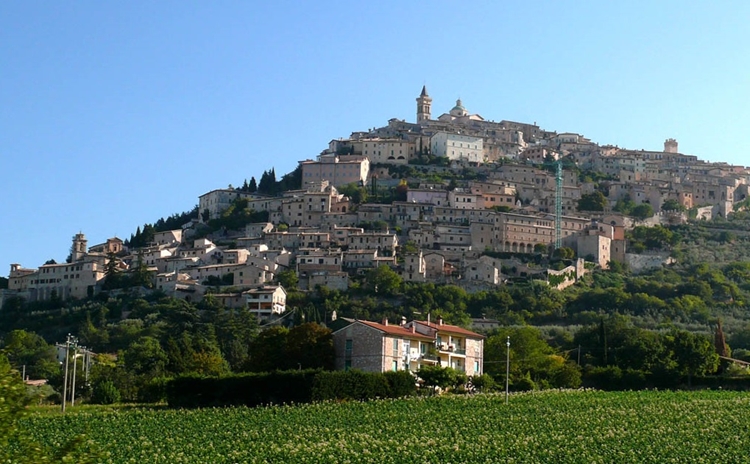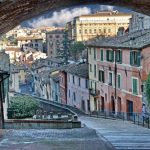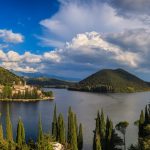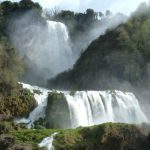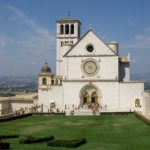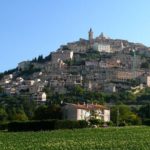Umbria is the ideal place to spend a quiet and cultural holiday, in touch with nature thanks to its landscapes, its history and the quality of its cuisine.
There are 6 natural reserves, such as Colfiorito park and lake Trasimeno park. In River Nera park, you may enjoy the view of the Marmore Falls, which were artificially realized in 1929: these falls are one of tallest in Europe with a vertical drop of 165 metres. Marmora Falls flow into Lake of Piediluco.
The countryside is rich in archelogical remains (prehistory, etruscan and roman) and of abbeys built in different periods, as the ancient Sant’Eustizio (in Piedivalle), and Sassovivo in Foligno area.
Lots of activities immersed in nature: fishing, canoeing, kayaking, hiking, biking, trekking, windsurfing (in lakes Trasimeno and Piediluco), or quieter activities like birdwatching or archeological or botanic routes.
Cities and villages are full of historical and cultural trasures.
Assisi is the city of Saint Francis, and it is a religious and spiritual destination and a charming medieval village, one of the most visited in the world. In Saint Francis Basil (recently restored after the terrible earthquake) you may be enchanted by Cimabue and Giotto frescos.
Spoleto boasts a fabulous Duomo full of medieval frescos. It is now famous thanks to Festival dei Due Mondi, a prestigious theatre festival (june), and also thanks to many cultural events.
Gubbio is a perfectly preserved Medieval village, known for its pottery (together with Deruta).
Todi has been choosen as location for movies directed by Pupi Avati, Dino Risi and Sergio Castellitto.
Orvieto, famous for the Cathedral, is a village which offers a lot for wine and food tourism.
Norcia, besides Saint Benedict monastery, is very appreciated for cured pork meat: the retail selling sausages and hams are called “norcineria”.
Foligno is famous as it is the place where the Divina Commedia was printed. Every september, there is a masked tournament, called Giostra della Quintana.
The whole territory is full of little villages perfectly preserved, of little family-run trattorias where to eat authentic local products. No rush when touring around, you have to enjoy every single aspect at its very best.
NATIONAL PARKS IN UMBRIA:
The National Parks of Italy are natural areas of land, sea, river, or lake whose value is a well-preserved ecosystem. Thus their nature, together with their cultural, educational, or recreational values are protected by the Italian Government in order to be preserved for the future. Currently, in Italy there are 25 National Parks, covering an area of over 1,500,000 hectares (15,000 km²), about 6% of the Italian territory.
REGIONAL PARKS IN UMBRIA:
The Italian Regional Parks are land, river, lake, and sea areas facing the coast. Their value is being like a system including the nature of the places, art, and cultural traditions of the local inhabitants. The Italian Regional Parks are more than 150 and cover an area of approximately 1million and 500,000 hectares.
Nera River Regional Park
Tiber River Regional Park
Colfiorito Regional Park
Lake Trasimeno Regional Park
Monte Cucco Regional Park
Monte Subasio Regional Park
WWF NATURE RESERVE IN UMBRIA:
The WWF Oases are the first Italian network of protected areas managed by a private association. WWF activities in the Oases range from ecotourism to nature holidays, education, training, and environmental information programs. There are more than 100 WWF Oases in Italy, covering more than 30,000 hectares of land in 18 regions. They are visited by more than 500,000 people a year.
In the Province of Terni:
Lake Alviano
ORANGE FLAGS IN UMBRIA:
Orange Flag is a tourism-environmental quality mark awarded by the Italian Touring Club to small towns in the Italian inland (maximum 15,000 inhabitants) which stand out for their quality hospitality. The Orange Flag has been awarded to over 200 Italian municipalities.
In the Province of Perugia:
Bevagna
Città della Pieve
Montefalco
Montone
Norcia
Panicale
Spello
Trevi
Vallo di Nera

